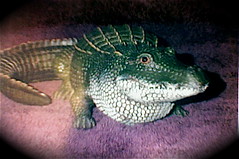A few days ago the phone rang and it was my friend Ray Kass, calling to tell me that Robert Rauschenberg had died. I hadn't seen Bob in many decades, but being confronted with his death unexpectedly caused me to remember how, in my twenties, he had once been a very close friend. Then he left New York and went to live on an island off the coast of Florida. I went to live in London, and subsequently, our paths rarely crossed.
I tried recalling when it was, and under what circumstances, that we first met. Was it Ray Johnson who introduced us? Or did we meet by chance at the Stable Gallery, when Bob exhibited that small plot of earth with the grass seeds planted in it, which hung on the wall masquerading as a painting? Every day he would arrive at the gallery to spray the piece with a plastic bottle full of water; a few days later, it began to sprout. At the time, I'd never seen anything remotely like it. But I soon learned brazenly beautiful shenanigans and electrifyingly perilous choices formed the core of everything Bob did. Even the gallery, actually an old remodeled stable which sometimes still smelled of horses, was quite unlike any other, then or now.
Memory has never been my strong point, but I do know, for instance--only because it is established historical record at this point--that I was the person who introduced Bob Rauschenberg to Jasper Johns, though I can't remember doing it. Still, there are things I do remember pretty well. I remember, for instance, my first encounter sometime in the mid 1950s with "Bed," on one of Leo Castelli's walls, its shabby patterned quilt and grotty, paint-encrusted pillow waiting ambiguously, as if for some stray Latvian refugee who needed shelter for the night. I remember, too, the intuitive daring of that shaggy goat standing on a platform in "Monogram," the big black tire around its waist proclaiming itself as the high-water mark of aesthetic shock. Could anyone else have thought of that? From his very beginnings as an artist, Bob had a cognitive tool kit of objects that, with only a little tinkering, could bring the experience of the eye to fever pitch. The sheer effrontery and fantastic potency of these early works seemed to come out of nowhere and run roughshod over every kind of aesthetic limit.
One more thing I can remember: being in his studio and seeing, for the first time, the dingy white tablecloth pulled taut on stretchers and used as a canvas, with an old army parachute glued to the lower-right section. Limp parachute strings drooped on past the edge of the frame; a pair of identical newspaper photographs combined with one fat brushstroke of China blue to occupy the empty space above. I remember the shock I felt even as I heard myself saying, caught up in the momentum of my own enthusiasm, "I don't think I can live without this painting."
"Well, you need to have it then," was the improbable response. In a single, phenomenal, unforgettable moment, the painting was mine. We made an arrangement for some minimal monthly payments, but I was too poor most of the time to meet them; all this took place in a period before the paradigm of profit had created the raffish, showbiz art world of today. In those days, Bob was still an unknown artist, and he seemed quite satisfied just to have a seriously devoted fan, which I was.
The painting, large as it is, never made it to London with me; many years later, while I was still living there, I ran out of money and offered to sell it to Jasper Johns. Jasper did buy it, and eventually offered the painting on permanent loan to the Yale Art Museum in New Haven.
What I want to say now, however, is that Bob's edgy relationship with everything was a huge influence in jump-starting my own lifelong relationship with collage as modus vivendi. During my early career as an artist in New York, Bob bought one of my collages from an exhibition at the Alan Gallery. And although I don't make collages any more, I do still write and think that way, because for me, life IS collage. You don't have to make anything up, just figure out the way it all fits together, what belongs with what. No mean feat, but if it works, you may even arrive quite naturally at the answer to an old collage-lover's favorite joke. Question: How do you repair a torn pizza?
I expect that Bob, who loved comics and understood how to bring kiddy humor into adult life, would have shot back the answer if he were here: With tomato paste, of course! I also expect it will take some doing now, on the part of us all, to get used to a world without him.
Thursday, May 15, 2008
Subscribe to:
Post Comments (Atom)

No comments:
Post a Comment